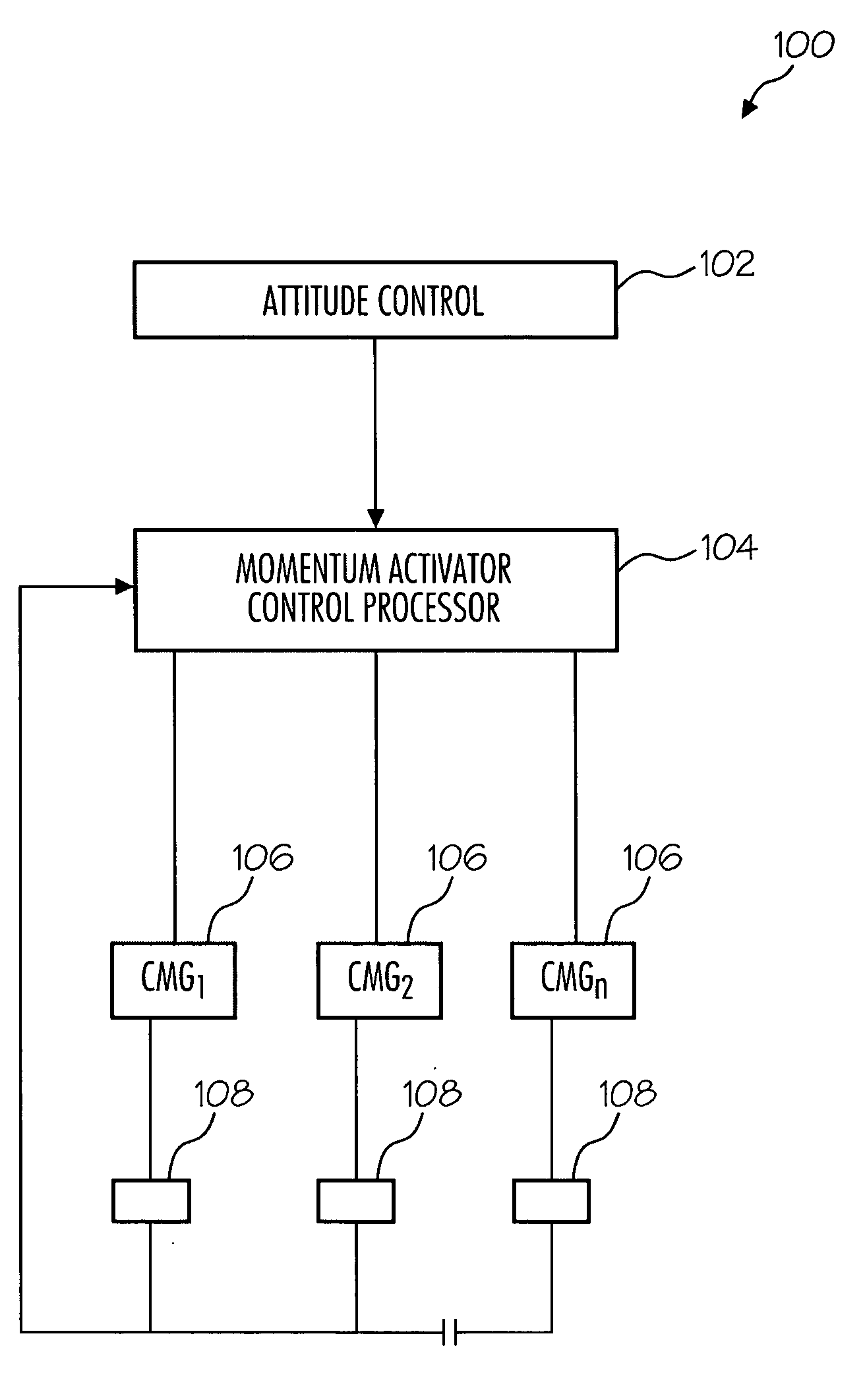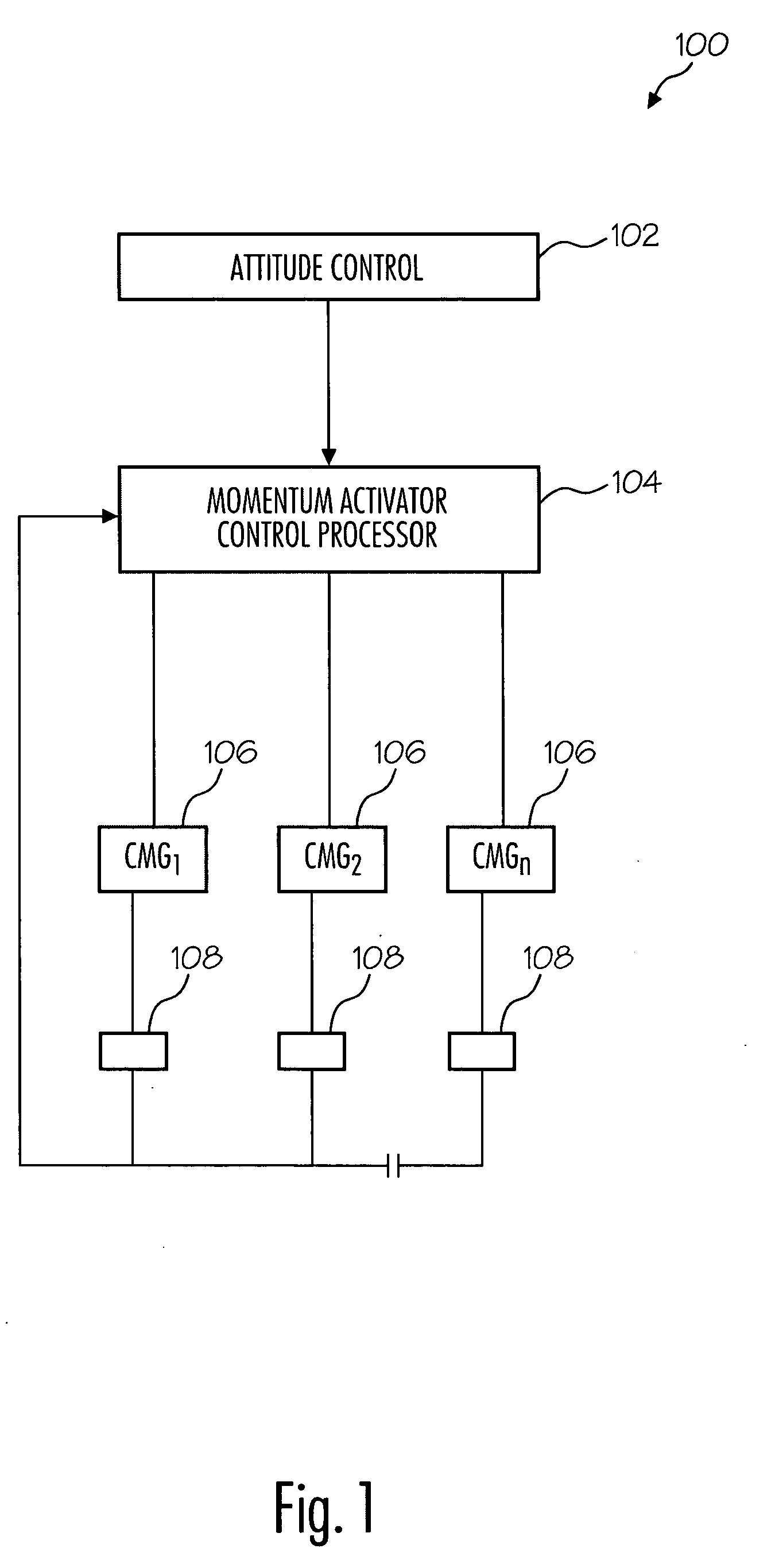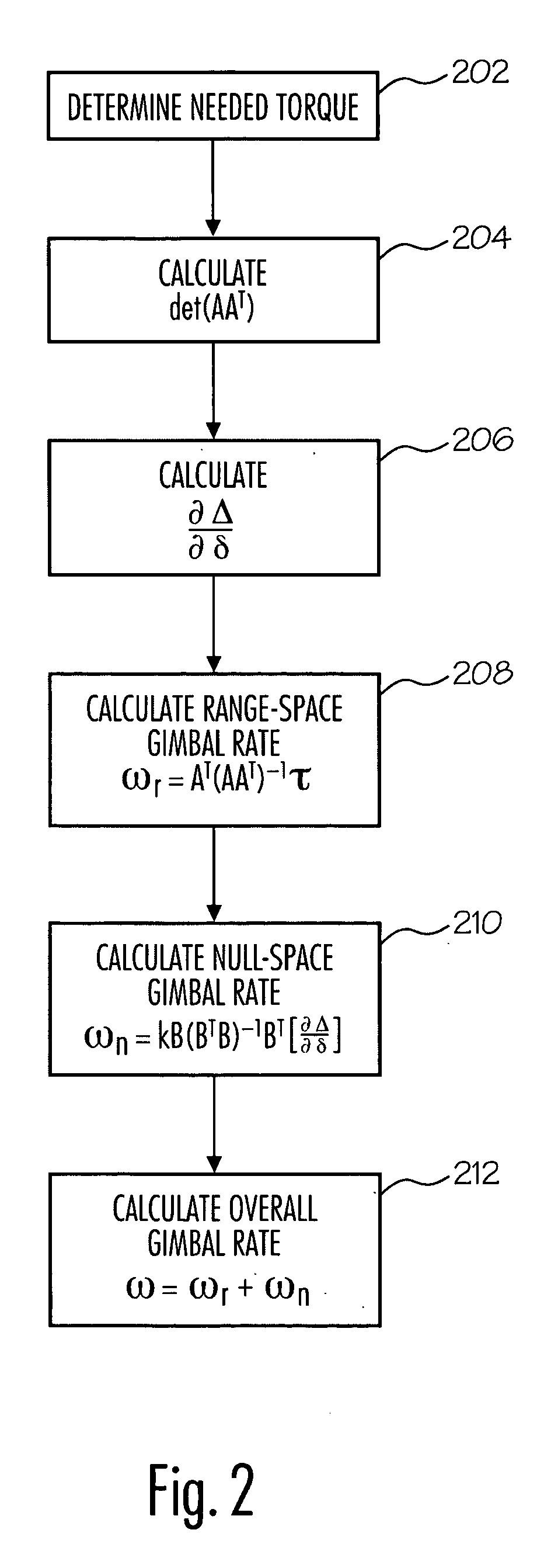Method and system for CMG array singularity avoidance
a singularity avoidance and array technology, applied in the field of spacecraft vehicle control, can solve the problems of one or more components, significant, undetectable torque, and approach changes the gimbal rate calculation
- Summary
- Abstract
- Description
- Claims
- Application Information
AI Technical Summary
Problems solved by technology
Method used
Image
Examples
second embodiment
[0033] In a second embodiment, the null-space steering maximizes a weighted sum of the eigenvalues of (AAT). For an n×n matrix, D, a scalar, λ, is an eigenvalue of D if there is a non-zero vector x such that Dx=λx. The eigenvalue can be found by first rewriting Dx=λx as [D−λ0I]x=0. This equation has a non-trivial solution if and only if det(D−λ0I)=0. Also, it is known that the det(D)=det D=∏i=1n λi.
That is, the product of the eigenvalues equals the determinant of the matrix. So, indirectly, this embodiment also steers the CMGs in a way that attempts to optimize the determinant. The difference in this embodiment is that each of the eigenvalues can be treated individually, an approach that may offer more versatility in some applications.
[0034] As discussed previously, when det(AAT)=0 the CMG array is singular. Since the product of the eigenvalues of a matrix equals the determinant of the matrix, by maximizing the weighted sum of the eigenvalues, singularities can be avoided. FIG. ...
first embodiment
[0035] In a first step, the required torque is determined (step 302). This torque is the torque requested to change the attitude of the spacecraft. Next, in step 304, the elements of the matrix AAT are calculated. The elements of matrix AAT are calculated in the same manner as the
[0036] Next, in step 306, the eigenvalues of AAT are calculated. As discussed previously the eigenvalues of AAT can be found from solving det(AAT−λI)=0 for the λ. Since AAT has a rank of three, there will be three eigenvalues: λ1, λ2, and λ3, and the solution to det(AAT−λI)=0 will be a third-degree polynomial, for which a closed-form, analytical solution can be found. Furthermore, these eigenvalues will all be real and nonzero, further simplifying the computation.
[0037] In step 308, a weighted sum of the eigenvalues can be formed as a cost function, J, to be maximized:
J=αλ1βλ2+γλ3 (17)
[0038] In Eqn. 17, the coefficients α, β and γ are weighting factors that can be varied to emphasis a particular eigenva...
PUM
 Login to View More
Login to View More Abstract
Description
Claims
Application Information
 Login to View More
Login to View More - R&D
- Intellectual Property
- Life Sciences
- Materials
- Tech Scout
- Unparalleled Data Quality
- Higher Quality Content
- 60% Fewer Hallucinations
Browse by: Latest US Patents, China's latest patents, Technical Efficacy Thesaurus, Application Domain, Technology Topic, Popular Technical Reports.
© 2025 PatSnap. All rights reserved.Legal|Privacy policy|Modern Slavery Act Transparency Statement|Sitemap|About US| Contact US: help@patsnap.com



